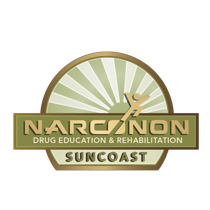The Problem with Free and
State-Funded Facilities

When looking for a drug treatment facility a person is usually faced with 3 options:
- Outpatient
- Free and State funded In-patient
- Long-term, residential
Outpatient
Out-patient clinics are the lowest level of care you can give someone who is struggling with drug addiction. When you enroll in an IOP or “intensive out-patient” clinic you don’t actually check yourself in to a facility. You stay at home and continue your daily life, aside from going to the clinic 3-5 times per week, taking drug tests, seeing a psychiatrist and doing group therapy and 12-step meetings.
One of the main problems with outpatient is that the drug user remains in the same environment where they’ve been using drugs. It’s very difficult for most drug addicts to just cease their drug use altogether once they’ve started an out-patient program. There’s nothing stopping them from using drugs if they have a bad day or get stirred up from the therapy sessions. Because it’s an “out-patient” facility, they haven’t checked into a residential rehabilitation center and haven’t been placed in a sterile environment where drugs aren’t readily available. It’s also extraordinarily difficult to try to get and stay sober in the same city, state or town a person has been using drugs in. It becomes overwhelming for the addict when literally everything around them reminds them of their addiction or drugs in general. Another factor is that the addict’s dealer (and several others) are in his phone and in fact, dealer “Rocks” has him on a route, and drops by daily to see if there’s anything he needs, offering prodding, promising relief.
“Yeah, I know you’re doin’ a program, but what’s the problem with one hit? Come on, man, grow a set!”
“C’mon Bro, you’ve already tried this…you know you ain’t gonna get clean.”
Free and State Funded
Free and state-funded facilities are very attractive to many families, especially those who have a loved one that has previously failed paid treatment. After a person has flunked rehab a few times, families become hard-pressed to believe that any treatment will work and they surely aren’t going to pay for another one that the person is just going to fail. These facilities and programs are paid for by the government at the expense of taxpayers. They are usually held in hospital wards or in a homeless shelter-type setting.
Most people enrolled in free and state-funded programs are court-ordered and don’t necessarily want to be there, which creates a toxic environment that’s not conducive to recovery. Also, these programs really don’t do much to handle a person’s addiction. These programs are often based on the 12-Step modality and come from the school of thought that “relapse is a part of recovery.” They actually EXPECT addicts to fail their program and return time after time after time, really getting nowhere fast. 12-Step programs also claim addiction is an “incurable disease,” taking the responsibility off the addict themselves. Therefore, actually trying to find WHY a person has become an addict is not part of the program.
These free programs are notorious as being “revolving doors,” meaning people go in, come out and go back in again. Usually no real help is given to the clients of these programs and they surely don’t go the extra mile to handle the underlying, root causes of a person’s problem.
Relapse DOES NOT have to a part of a person’s recovery and, given the right treatment, it won’t be.
Time is Crucial
Free and state-funded programs only give a person 1-4 weeks of treatment. Aside from the lack of real treatment given in these programs, 1-4 weeks does not give an addict enough time away from drugs and their old lifestyle. Often the first 10 days is spent in detox (withdrawal) and getting over the sickness caused by not using drugs. Then, at best, they have 20 days left to do some light counseling, group meetings and get plopped in front of a psychiatrist who will diagnose the addict with a mental illness and then prescribe meds. On day 30, whether they’re ready or not, the addict is kicked out the door, back out onto the streets to fend for themselves and hopefully figure things out.
More often than not, the addict goes right back to where they left off; wandering the streets with an unhandled addiction, no place to go, no job, no home and no hope. Drugs seem like a comforting solution. A safety blanket. Then it’s back to the races, yet again.
As a result of the above, too many times, Intake Coordinators at drug rehabs hear:
“I’m not paying for another treatment!”
“I’ve already spent $100,000 trying to get them sober!”
“We don’t have a dime left to our name!”
The only thing that’s remotely attractive about these free programs is their price tag. Other than that, these programs usually have NOTHING to offer in the way of getting an addict “real” help. It’s a true fact that families can spend every penny they have to get a loved one clean. With the many, many programs out there it’s difficult, initially, to determine which is the best one to help them remain drug free.
Long-Term Residential
Long-term, residential treatment programs last a minimum of 90 days or more and generally take a holistic, non-medical approach to treating addiction. These centers are usually privately paid and are limited on insurance coverage since they don’t put addicts on drugs to get them off drugs. Insurance companies want an addict to go to their “in-network” providers because they have a vested interest in them being treated with “replacement drug therapy” and psychiatric medication prescribed by a psychiatrist after a diagnosis of mental health issues.
Long-term, residential facilities’ sole purpose is to find the root causes of a person’s addiction and help them address WHY they became an addict; why did drugs become the solution to life’s problems? These programs will take their time with an addict and not unleash them into the world without their issues being resolved, giving them the greatest chance for success.
The Optimal Solution
The best solution for any addict is to find a long-term, residential treatment center that focuses on getting to the underlying causes of an addiction and does not put them on drugs to get them off of drugs. Long-term, residential programs will take their time with the addict and not rush them out the door. They will take care to make sure no stone is left unturned and that all the addict’s issues are out in the open, ready to be dealt with. These facilities will bend over backwards to help an addict put their addiction to rest and allow them to move forward and lead healthy, productive lives.
Narconon is a long-term, residential drug and alcohol rehabilitation program. The Narconon program is entirely drug-free. Read more here, to find what makes the Narconon program uniquely effective.
If you or a loved one is struggling with addiction, call Narconon Suncoast at 877-850-7355 to speak to an admissions counselor today!
